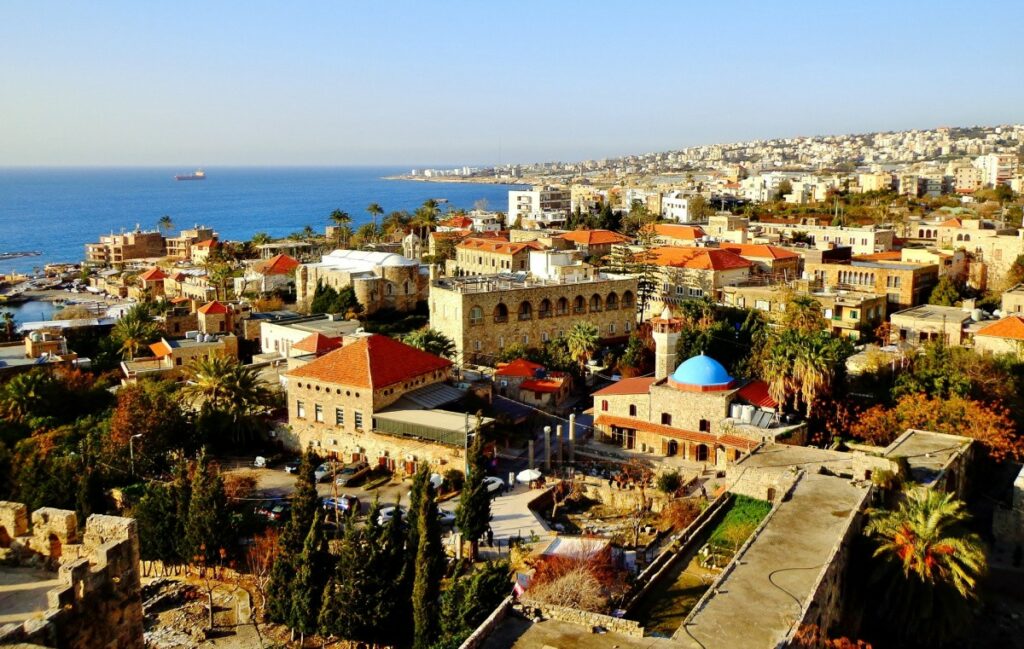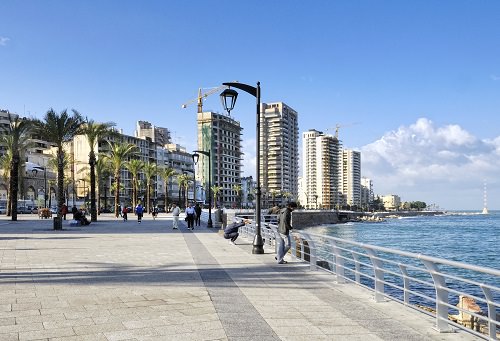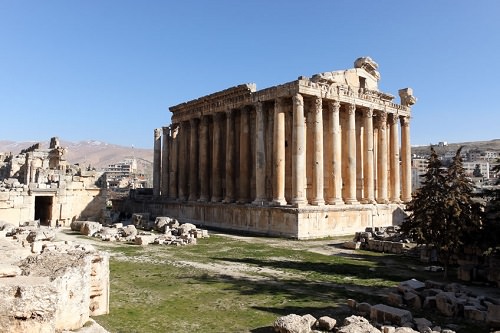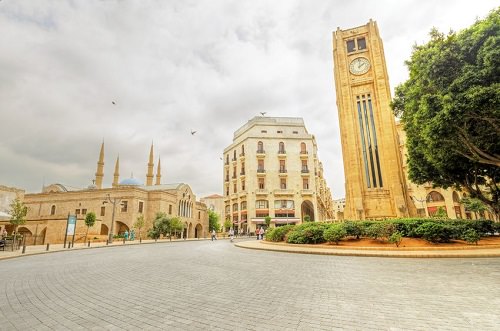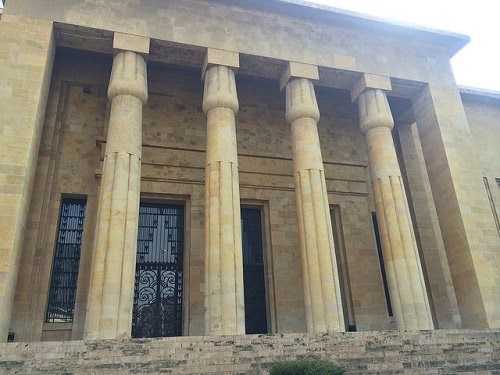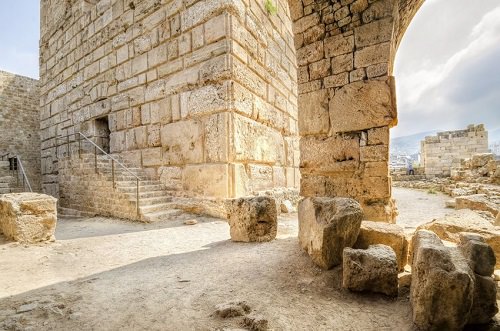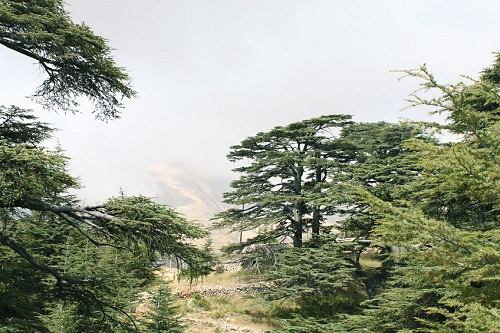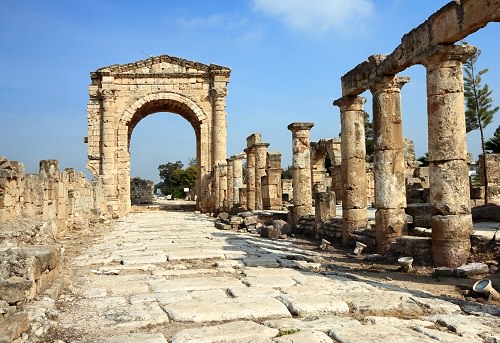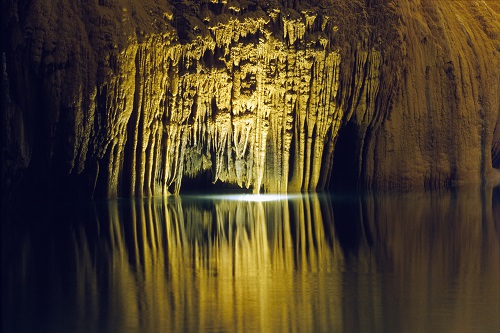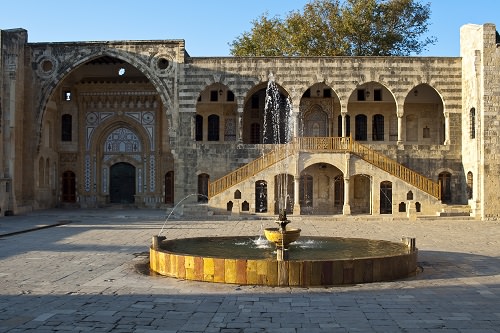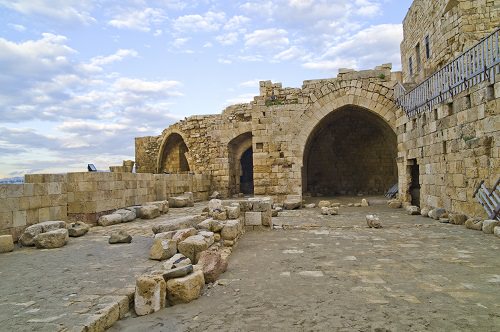At one time, Beirut, the capital of the East Mediterranean nation of Lebanon, was the top tourist draw of the region. Known as the Paris of the East, it attracted the rich of the entire Arab region. While Lebanon has suffered greatly in the endless wars in neighboring Syria and Israel, it has picked up in recent years. Today, Lebanon offers visitors a modern Arab experience, together with a deep look at its carefully preserved history. Here are ten incredible places to visit in Lebanon.
1. The Corniche
The Corniche is one of the most beautiful places in Lebanon and a favorite seaside promenades of locals and visitors in Beirut, where you can admire the beautiful landscapes of the Lebanese Range and magnificent views of the Mediterranean Sea. The Corniche is a popular promenade area along Beirut’s seaside. It covers a large section of the city of Beirut, from the beginning of Avenue de Paris to St. George’s Motor Yacht Club on Avenue Rafiq el Hariri. From the Corniche, you can see the famous Pigeon Rocks, which rise above the sea just a few dozen meters from the shore.
With a wide coastal Boulevard running along its length and the famous Raouché rock arching out in the distance in the sea, the Corniche is a beautiful spot to spend an evening when the place fills up with families and couples out for a walk. While most people simply come to stretch their legs, the Luna Park amusement park nearby is a great attraction for those who are more zestful. Pole fishing is another fun possibility. The Corniche promenade attracts people like a magnet, and few people voluntarily refuse to be under the influence of its charms.
2. The Temple of Bacchus
The Temple of Bacchus is a fascinating place that is worth a visit in Lebanon. It attracts tourists with its majestic ruins of a unique temple complex, which has no analogs in the whole east. This temple is dedicated to Bacchus, the god of wine.
This incredible Temple of Bacchus is a vast and ancient ruin built on the same architectural theme as the Parthenon of Athens. Dating to 150 AD, the temple at the time was originally dedicated to Venus. Today, this one of the most beautiful places in Lebanon is in much better repair than the Parthenon.
In plan, the temple is a rectangle sixty-six meters long and thirty-five meters wide. Forty-two Corinthian order columns were erected along the walls, nineteen of which still stand. Many architectural details have survived the centuries.
You can freely walk around the temple, touch the columns and podiums, as well as the bas-reliefs with beautiful images of lions, touching, in every sense of the word, the history itself, as there are no barriers here.
3. The Central District of Beirut
The Central District of Beirut is the historical and geographical core of the Lebanese capital, Beirut. It is the country’s bright, lively, financial, commercial, and administrative center, a territory of thousands of years, traditionally engaged in business, finance, culture, and leisure.
While the downtown area of Beirut is wholly urbanized, its many historical sites are kept in well-preserved condition. The Garden of Forgiveness, the Roman Baths, and the Garden in the Mohammad Al-Amin Mosque all have great historical significance. Other great attractions include Castle Square, the site of the ancient settlement of Berytus, and the legendary Nejmeh Square. This one of the most remarkable places in Lebanon has a modern side, too – it has fashionable boulevards and hundreds of modern stores for tourists to explore.
You can spend the whole day here without noticing how time has flown. Everyone will find something for themselves. Tourists can wander around aimlessly, admire historical sites, and go sightseeing. Travelers, interested in excellent shopping should definitely run through fashion boutiques and get in a fashion sale. The companies or couples can have a wonderful time here, sitting and enjoying a leisurely conversation, or maybe lunch in one of the many restaurants.
4. The National Museum
Photo: hragv
Travelers from all over the world especially love the National Museum of Beirut. This truly unique attraction is of great value not only for the city but for the entire republic. Everything about the museum is incredible. And everyone can freely take pictures against the backdrop of sculptures and bewitching sarcophagi.
Beirut’s National Museum curates more than 1,000 archaeological exhibits from the country’s prehistoric and medieval past. The highlights of the museum’s collection include Phoenician statues of children dating to the 5th century BC, Byzantine gold jewelry, and gilded figurines from Byblos.
The galleries exhibit exciting collections of tools and hunting tools of ancient people. In addition, the museum has one of the world’s most famous collections of ancient Phoenician finds. Ancient texts, purple items, pottery and glassware, Byzantine and Roman mosaic images, and Mamluk and Arabic coins are stored here.
In the museum, your attention will also appear in a room with mummified bodies found by archaeologists in such an amazing state that it is impossible to take your eyes off. True, these exhibits cannot be photographed, but you can see them by going into a special dark room for several people at a time. In addition, ancient sarcophagi are equipped with upper mirrors in excellent condition, which makes the hall a mystery.
Read also – 10 Spectacular Natural Wonders of the Middle East
5. Byblos
A quiet, cozy city located 40 km north of Beirut and born in 8000 BC. e. This incredible city, that is worth a visit, is one of the most interesting archaeological sites in the Middle East, which tourists from all over the world seek to see.
Byblos is famous for being one of the oldest settlements in the region. The history of this small, coastal fishing town goes back five millennia. The ruins of the Crusader Castle are the top attraction in this town today. This incredible Lebanon town is full of the first settlements of fishing communities, the city’s first buildings, the Phoenicians’ cemetery, the 4000-year-old Egyptian temple, the Persian fortifications to the Roman road, the Byzantine churches, the citadel of the Middle Ages of the Ottoman Empire.
A walk around this medieval town can be fascinating, taking you past beautifully preserved streets and ancient stone houses still lived in. It’s a great reason to visit Lebanon, as here you can literally touch the history. For tourists, Byblos has excellent seafood and souvenir shopping.
6. Qadisha Valley
Kadisha is one of Lebanon’s most profound and one of the most beautiful places in Lebanon. It is truly a particular world. The Holy Qadisha Valley has been part of the Christian tradition for millennia. Ancient Christian monastic communities live there to this day.
Above the famous Cedar Grove rises Cornet el Sauda, the highest peak in Lebanon (3080 m). Kadisha means “holy” and Wadi Kadisha means “Sacred Valley”. Owing to its cultural significance, the Valley finds a spot on the UNESCO World Heritage list.
Qadisha Valley is worth a visit for its natural beauty, too. At the bottom of this wild gorge with steep slopes flows the river Kadisha, the source of which is in the grotto of Kadisha at the foot of the Cedars. This incredibly beautiful place in Lebanon is suitable for hiking in summer.
7. Tyre
Tyre was one of the ancient times’ great trading centers in southern Lebanon. Today, this ancient Phoenician city is famous for its ancient ruins: a hippodrome and harbor dating to 2750 BC.
This beautiful town in Lebanon boasts a remarkable archaeological park – and its scale is so huge that UNESCO included the city on the World Heritage List in 1984. It was forced to divide the attractions into three vast zones. In Al-Mina-1 and Al-Mina-2, you can see the oldest evidence of the activities of the civilizations of the Middle East – the Egyptians, Romans, and Byzantines. And Al-Bass is entirely dedicated to Roman “works”, of which the most remarkable are the hippodrome for 20 thousand spectators and the arched gallery.
Tyre is far from simply a ruin. On the contrary, it is a busy, modern port city with more than 100,000 inhabitants.
8. The Jeita Grotto
Jeita Grotto is a complex of two separate but interconnected limestone karst caves with a total length of almost 9 kilometers. This one of the most beautiful places in Lebanon finds a spot in the New 7 Wonders of the Natural World list.
The lower cave was discovered quite a long time ago, in the first half of the 19th century. Scientists found out that this cave was inhabited in prehistoric times. The lower cave can only be reached by boat, as it is filled with an underground river.
But the most beautiful is the upper cave, which was opened in 1958. Its main decoration is fabulously beautiful stalactites. The height of some galleries of the upper cave reaches 120 meters. With skillful lighting, the underworld turns into a fairy-tale kingdom, the beauty of which can be admired endlessly.
Excursion to the beautiful Jeita Grotto promises to be incredibly exciting. With a guided boat tour to take you past the cave system’s colorful rock formations, the Jeita Grotto is a great place to visit with the family.
Read also – 10 Best and Cheapest Countries for Backpackers
9. Beiteddine
The city is located in the mountainous area of central Lebanon. The city’s main attraction is the palace of the same name, built by Italian architects on the orders of Emir Bashir Shihab II.
Beiteddine Palace is built on a mountain 50 km from Beirut. This fascinating edifice was established in the 19th century as the luxury palace of the local ruler, Emir Bechir Chehab II. The palace is a must-see due to its spectacular Middle Eastern architecture, multiple courtyards, ornately decorated rooms, and grand Middle Eastern baths.
Every year since 1985, in July and August, the palace has hosted an arts festival, one of the most famous cultural events in the Middle East.
10. Sidon
Along with Tyre, Sidon was world-famous in its time as a Phoenician trading city. Unfortunately, not much of the city’s castles survive today.
Traces of the long and eventful history of Sidon can be seen everywhere – in the gaps between the poor houses of its inhabitants, ancient ruins suddenly peep through, and the entrance from the sea is reliably protected by the Sea Fortress of the 13th century.
The main town of Sidon also has an incredibly preserved medieval city center where the markets and eating houses function as they have done for centuries. They offer a great look into the Middle Eastern Way of life.
2 km from Sidon is another majestic place that is worth a visit – the well-preserved ruins of the Phoenician temple of the god Eshmun with the spectacular beauty of the throne of Astarte.
Lebanon is one of the most beautiful countries in the world that offers many things to do and to see. Unfortunately, many people avoid visiting Lebanon because they think that this country is not worth visiting. However, from personal experience I can say that it’s worth visiting. Once you visit Lebanon, it’ll become one of your favorite places, I promise! Have you ever been to Lebanon? What are your favorite places to visit?
What are the best places to visit in Lebanon?
Undoubtedly, the capital of Lebanon – Beirut, is the best place to visit. It is the most multicultural and multinational, the most tolerant and free city in the Middle East. Numerous restaurants of authentic cuisine and coffee houses, ancient mosques and Christian temples, modern nightclubs, and ancient monuments, the history of which dates back to before our era, coexist perfectly here. Therefore, you can find many great entertainment opportunities, enjoying majestic views of nature.
Why is Lebanon so beautiful?
Lebanon is so beautiful due to its flavor and unique sights – old ruins. It is for this reason that foreigners flock here in droves. Moreover, such a multifaceted and eventful history also attracts tourists worldwide. The travelers have the opportunity to plunge into the whole atmosphere of Lebanon.

